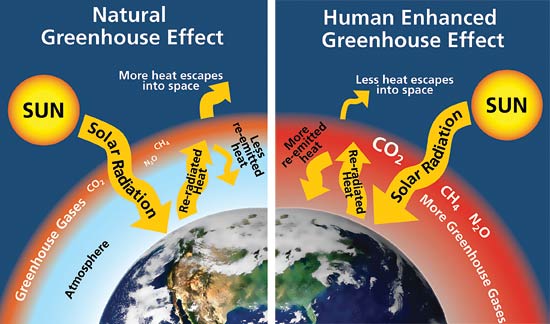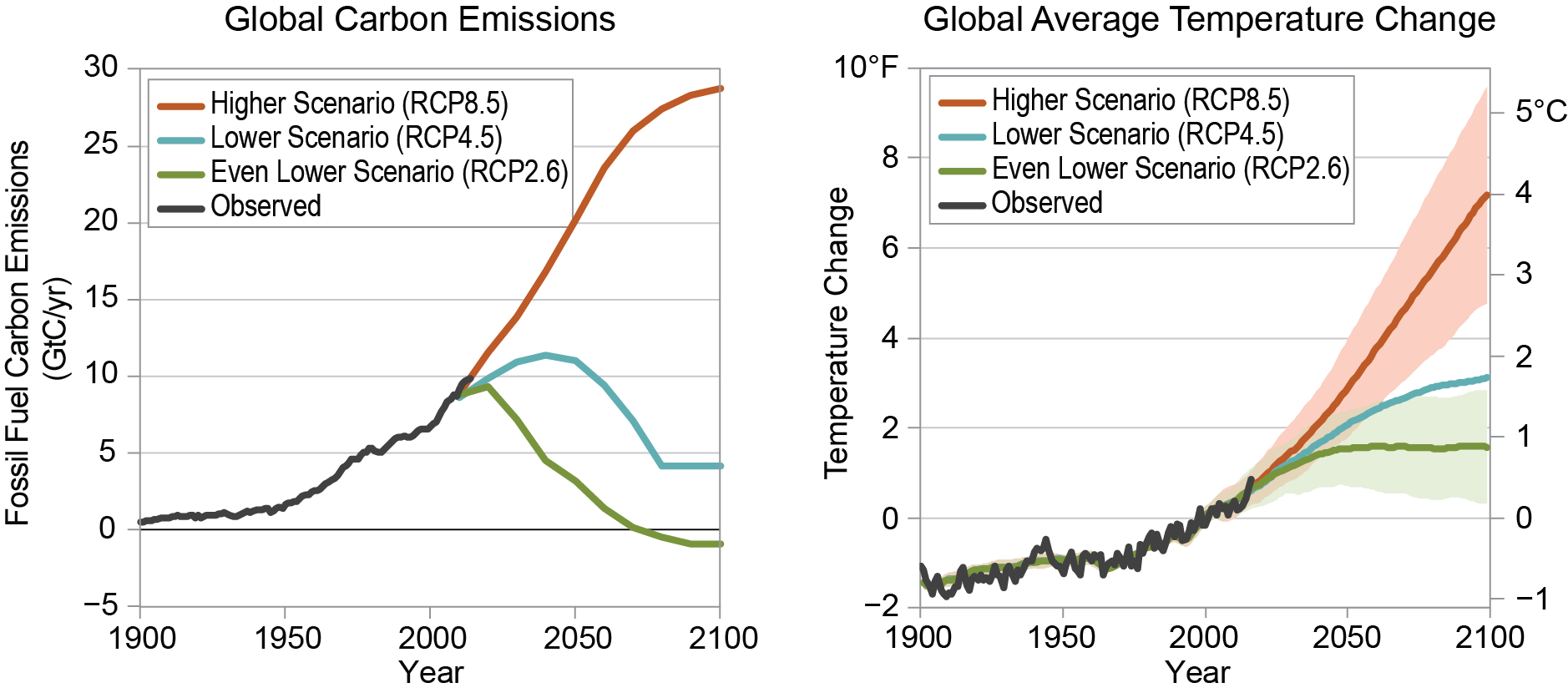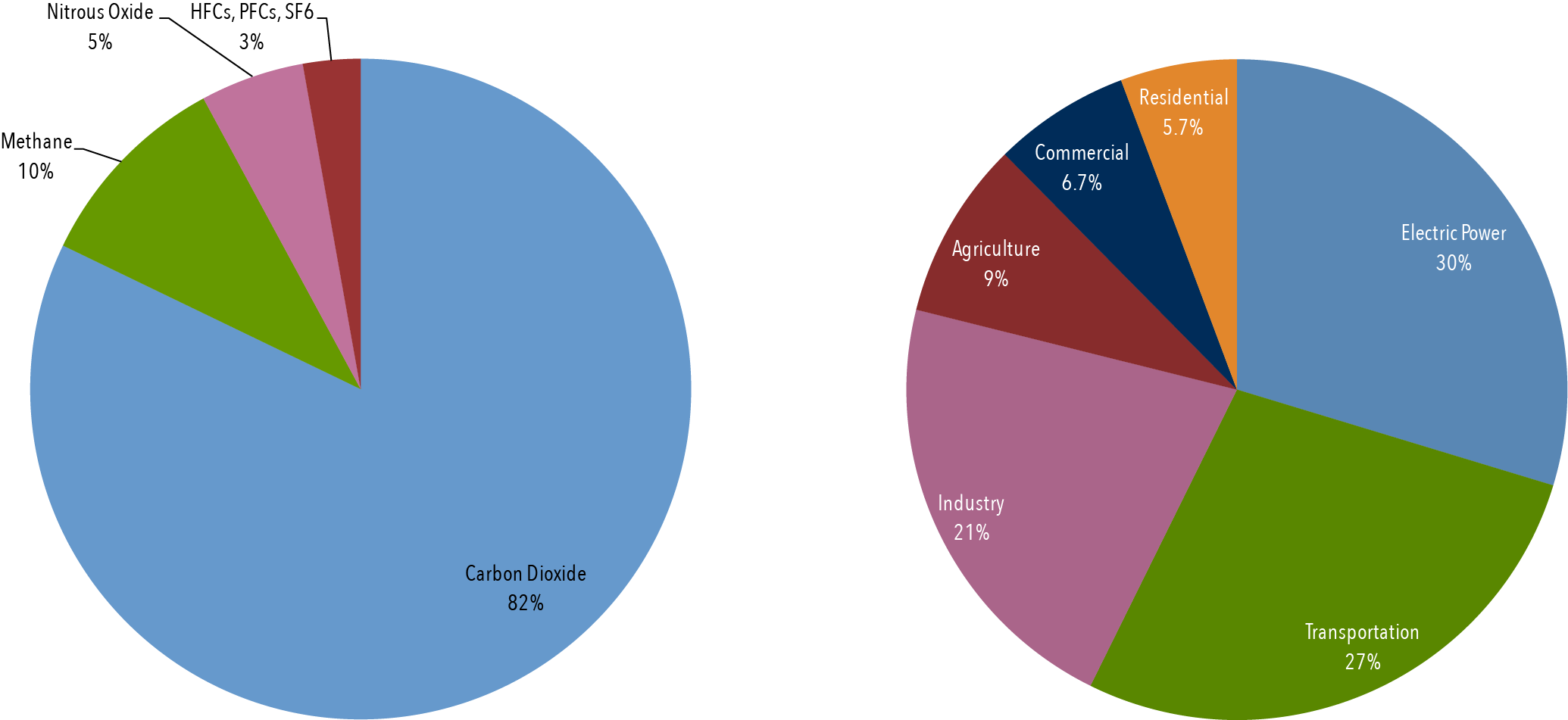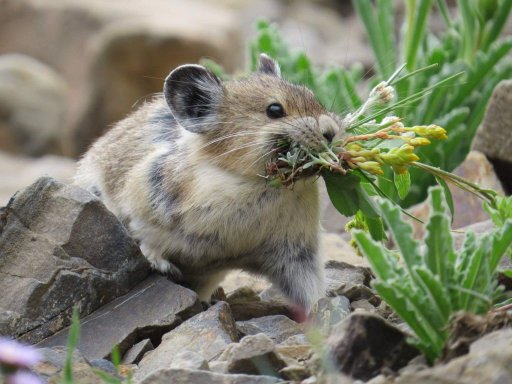Energy Environment and Climate 3rd Edition Chapter 4 Solutions
We can help you understand how and why our climate is changing, how climate change affects us, and what people can do to slow climate change and prepare for it.
We explain the science behind climate change, the impactsof climate change, andhow you can help .We've also created a list of resources and activities for educators to do with students of all ages.
The Science
Scientific evidence paints a clear picture: Climate change is happening, it is caused in large part by human activity, and it will have many serious and potentially damaging effects in the decades ahead. The primary cause is greenhouse gas emissions from cars, power plants and other human-made sources—rather than natural variations in climate. These emissions include carbon dioxide — the main greenhouse gas — which has reached a concentration level in our atmosphere that the Earth hasn't seen for more than 400,000 years. Greenhouse gases act like a blanket, trapping the sun's warmth near the earth's surface, and affecting the planet's climate system.
While we know much about the climate, scientists are still studying its effects and learning more every day. The climate system is very complex, and there are a lot of unknowns and uncertainties. However, through centuries of studies and experiments, we've been able to put together a strong picture of how the system works.
The Greenhouse Effect
The picture below shows the greenhouse effect. Light from the sun passes through the atmosphere and is absorbed by the Earth's surface, warming it. Greenhouse gases, like carbon dioxide, act like a blanket, trapping heat near the surface and raising the temperature. It is a natural process that warms the planet. But human activities are increasing the amount of greenhouse gases and trapping more heat.
Greenhouse gases stay in the atmosphere for a long time. Although plants and the ocean absorb carbon dioxide, they can't keep up with all the extra carbon dioxide that people have been releasing. So the amount of carbon dioxide in the atmosphere has been increasing over time.
The Greenhouse Effect Explained

Where do greenhouse gases come from?
Up until about 150 years ago, human activity did not produce many greenhouse gases. That changed as forests were cleared to make way for cities and farms, and as important inventions and industrial innovations, like the widespread use of electricity and cars, transformed the way we live.
These inventions and innovations demand energy. Burning fossil fuels — coal, oil, and natural gas — has become an important source of that energy. Burning fossil fuels releases carbon dioxide and other greenhouse gases into the atmosphere.
Today in the United States, electricity and transportation (cars, trucks and planes) are responsible for almost 60 percent of carbon dioxide emissions. The rest comes from agriculture, industry – such as factories that make products we use – and from energy we use in our homes and businesses.
Learn more about U.S. greenhouse gas emissions here.
As global carbon emissions have increased, so have global temperatures. The following charts show how both emissions and temperatures have gone up since 1900, and the projections for how they could continue to change in the future. If we continue on our current path, and emit more and more greenhouse gases, the temperature of the Earth will rise a lot – maybe as much as 5 degrees Celsius (9 degrees Fahrenheit) by 2100. However, if we reduce our emissions, the temperature of the Earth will still rise but we might be able to keep the rise below 2 degrees Celsius (or about 4.8 degrees Fahrenheit).
Observed and Projected Changes in Carbon Emissions and Temperature

Greenhouse Gases
The three most common types of greenhouse gases are:
- Carbon Dioxide (CO2): Carbon dioxide enters the atmosphere through the burning of fossil fuels (oil, natural gas, and coal), solid waste, trees and wood products, and as a result of other chemical reactions such as making cement. Carbon dioxide is removed from the atmosphere and stored when it is absorbed by plants as part of the biological carbon cycle. It makes up 82 percent of U.S. greenhouse emissions, or about four fifths. Learn more about how emissions from the power sector are regulated in the U.S.
- Methane (CH4): Methane is emitted during the production and transport of coal, natural gas, and oil. Methane emissions also come from livestock and other agricultural practices and by the decay of organic waste in landfills. It makes up 10 percent of U.S. greenhouse emissions. Learn more about how industrial greenhouse gases like methane are controlled in the U.S.
- Nitrous Oxide (N2O): Nitrous oxide is emitted during agricultural and industrial activities, as well as during combustion of fossil fuels and solid waste. It makes up 5 percent of U.S. greenhouse emissions.
- Hydrofluorocarbons (HFCs), Perfluorocarbons (PFCs), and Sulfur Hexafluoride (SF6): These greenhouse gases combined make up only 3 percent of all U.S. greenhouse gas emissions, but they are strong contributors to the greenhouse gas effect because they stay in the atmosphere for a very long time. These gases are used to keep things cool in our refrigerators and freezers as well as keep buildings and cars comfortable in hot weather. However, when the gases escape into the atmosphere, they trap the heat that comes from the sun and prevent it from escaping the atmosphere.
U.S. Greenhouse Gases by Sector

Impacts of a Changing Climate
Each of the past four decades has been warmer than the previous one. According to the National Oceanic and Atmospheric Administration, 2016 was the warmest year on record, and the six warmest years have all been since 2010. 2019 was the second-hottest year ever recorded, just shy of the record set in 2016.
Rising global temperatures threaten human health, increase the risk of some types of extreme weather, and damage ecosystems. And as the oceans warm and polar ice caps melt, sea levels are rising, endangering coastal areas. These impacts are already being felt today, and groups like the poor, elderly, and those living in conflict areas are especially vulnerable.
Learn more about the relationship between extreme weather and climate change.
In addition to the ways climate change threatens humans, many species of wildlife around the globe are facing challenges to their ways of life that, if they're not able to adapt quickly to the new conditions under climate change, could cause them to go extinct. The American pika, a potato-sized relative of the rabbit, could be the first North American mammal to go extinct due to climate change, as warmer temperatures push the creature into higher and higher altitudes, where eventually they will run out of space.

Impacts of climate change include:
- Heat waves. Heat waves are long periods of time with above-normal temperatures. As the Earth warms, more areas will be at risk for hotter and more frequent extreme heat waves. Learn more about the link between climate change and extreme heat.
- Heavy Precipitation. Heavy downpours are becoming more common in many locations. Learn more about the link between climate change and heavy precipitation.
- Sea-Level Rise. Sea level has risen about 8 inches due to the melting of glaciers and ice sheets. Warmer seas and oceans is also making coastal storms more damaging. Scientists predict sea levels in the United States could rise 1 to 4 feet this century, and could be even higher if glaciers in Greenland or Antarctica melt especially quickly.
- Threats to habitats and animals. As temperatures warm, many plants and animals are migrating to higher elevations or away from the equator. Some animals may have difficulty moving or adapting to new habitats.
- Ocean acidification. Extra carbon dioxide in the atmosphere is absorbed by the oceans, making them more acidic. This can make it difficult for corals and microorganisms that form shells to survive, disrupting the food supply for other sea animals.
- Wildfires. These are large fires that burn vast amounts of forests and brush. When they are not controlled, wildfires can destroy homes and be deadly. The number of large wildfires and the length of the wildfire season have been increasing in recent decades. Find out how climate change will worsen wildfire conditions.
- Drought. Global warming will increase the risk of drought in some places, and might make them unsuitable for growing food. Warmer temperatures can also increase water demand and evaporation, stressing water supplies. Learn about the links between climate change and drought.
How you can help
We need to use more clean energy – and use that energy more efficiently — to power everything from our phones to our buildings and factories. We need to drive cars and trucks that use less gasoline or run on electricity or other alternative fuels. Everyone can play a part, including government, businesses, and you.
There are two things we need to do:
The first is to reduce the greenhouse gas emissions responsible for climate change. By choosing cleaner ways to power our homes, offices, and cars, and being more efficient and less wasteful, we can produce fewer greenhouse gas emissions.
Everyone can play a part in a clean energy future, including government, businesses, and you. There are lot of things you can do to help, like turning off the lights when you leave a room to reduce the electricity you use, taking shorter showers to reduce the water you use (and the energy it takes to process, move, and heat it), planting a tree to absorb carbon dioxide, or recycling to reduce waste. For example, recycling aluminum like soda cans is 90-95 percent more energy efficient than producing aluminum from raw materials.
Look for more ideas on what we can do together and individually.
The second is to prepare for life in a changing climate. We need to make sure our buildings, roads, businesses and all the services they use can withstand the climate changes that we can't avoid.
Learn how communities and companies are preparing.
What young people like you are doing around the world
Whatever your talents are, you can use them to get involved in fighting climate change. Around the world, young people are learning about climate change and taking action.
For example, some students are joining together to call on their governments to create strong policies to fight climate change. Other students are putting their engineering minds to work to invent new technologies to cut emissions or pull greenhouse gases out of the atmosphere. Still others are using their creative talents to bring awareness to climate change by writing songs and creating art.
You don't have to be a world-class painter or rocket scientist to make a difference in the fight against climate change. Look for ways to get involved in your community – maybe you can help your school set up a composting program to keep food waste out of the landfill; maybe your church needs help switching to energy efficient lights; maybe you can work with your local government to learn about the ways your community is preparing for extreme weather or wildfires. Everyone can do something to fight climate change.
Check out our Educator Resources page for activities you can do to learn more about how climate change works and how you can be a part of the solution.
C2ES thanks the Alcoa Foundation for its support, which allowed us to develop our Climate Classroom content. As a fully independent organization, C2ES is solely responsible for its positions, programs, and publications.
Energy Environment and Climate 3rd Edition Chapter 4 Solutions
Source: https://www.c2es.org/content/climate-basics-for-kids/
0 Response to "Energy Environment and Climate 3rd Edition Chapter 4 Solutions"
Post a Comment